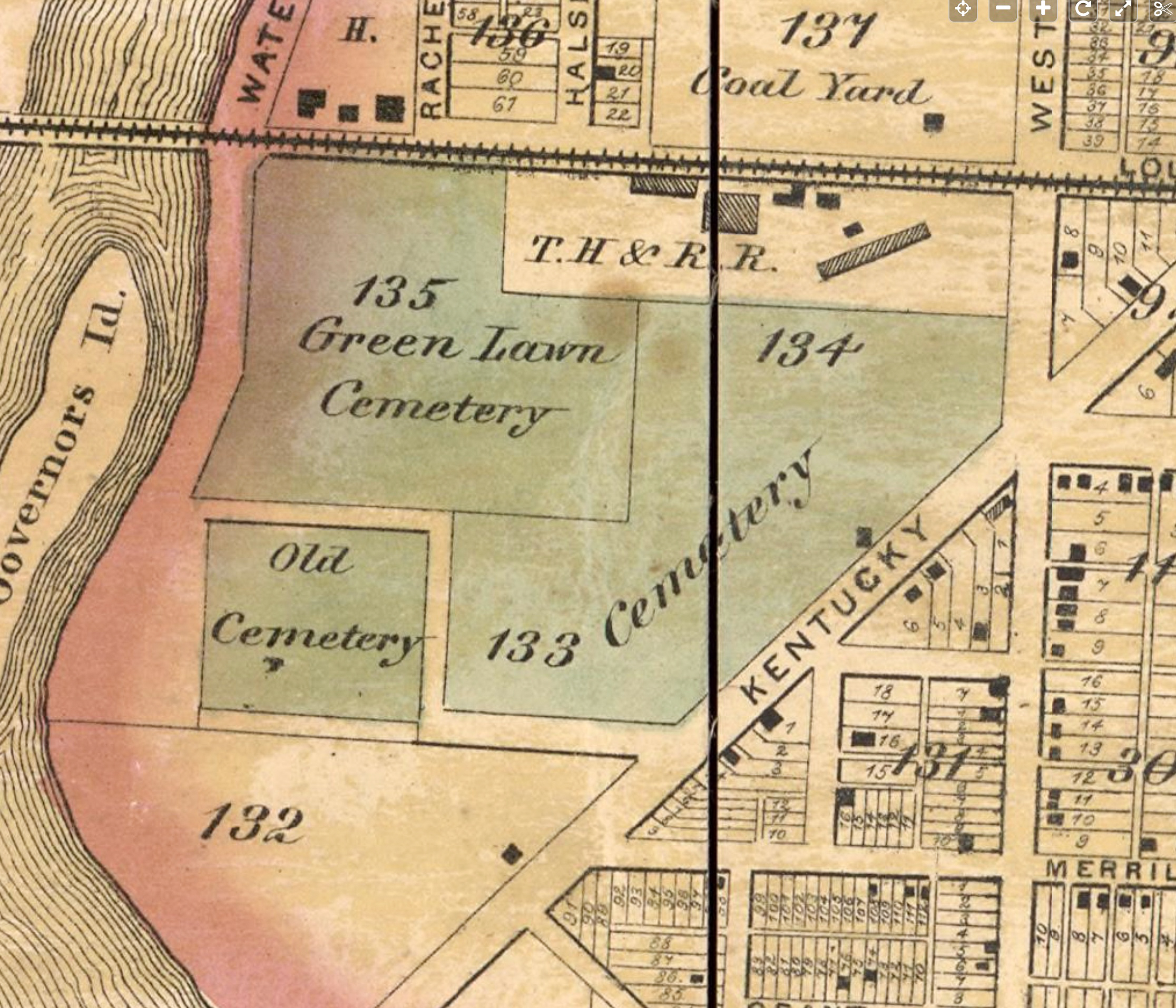Long Buried, Now Unearthed
A forgotten and obliterated cemetery, Greenlawn Cemetery, is one such topic Davis stumbled across and got sidetracked by while at the Indianapolis Historic Preservation Commission researching an architect. Her personal deep-dive produced an invitation to present a COVID style, Zoom lecture for the Indiana Landmarks Foundation in October 2020 on her findings. It has since spawned a trickle-down of incite, conversation, and action.
Greenlawn was the city’s oldest public cemetery established in 1821 downtown along the banks of the White River in what became a heavily industrial area. New burials ceased in the 1890s due to space, grave-robbing, and river erosion. Pioneers and Civil War Union soldiers were buried there, as were 1,700 Confederate soldiers who died as prisoners-of-war at nearby Camp Morton. By 1870, the Union soldiers and pioneers were moved to Crown Hill Cemetery four miles north, which was outside of the city at the time. The Terre Haute Railroad Company then purchased the land the Confederates were buried in, so those bodies were moved to Crown Hill as well.
Slowly, as the city grew, the cemetery continued to be picked apart by railroads and industries such as a slaughterhouse. Disregard for the dead was brazen, if not morbid, in the formally park-like resting place. During the Great Flood in 1913, for instance, it’s said that headstones were gathered and used as a flood wall, and that bones were sticking out of the banks. The continuum of development over time has produced grim finds including, in the 1990s, a casket as well as random bones.
Particularly at the mercy of public amnesia then and now, was a segregated section which Davis brought to light. Incomplete records suggest that as many as 500 to 1,000 Black residents were buried at Greenlawn. But the segregated section was located on the riverbank, so those particular graves likely eroded into the river especially in the 1913 flood. Due to the disrespectful nature of the cemetery’s uproot, and the lack of any index or map of those interred, who knows what remains and of whom.
“I just want everyone to be informed and learn as much as I have,” Davis said. “People have just learned a Black cemetery was there and that it was absolutely obliterated.”

Davis’s discovery has led to the segregated burial section’s site being a matter of contention as the city plans to build a bridge on top of that area starting September 2023. The proposed Henry Street bridge, replete with color-changing LED lights, would connect downtown to the locale of a new stadium for the city’s professional soccer team, Indy Eleven, on the other side of the river.